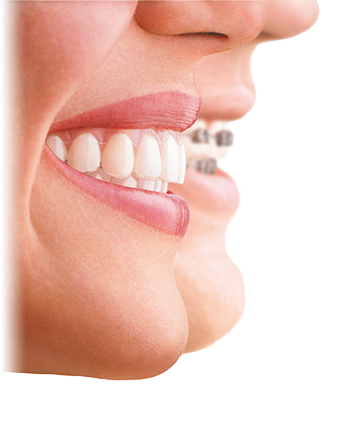 Having a missing tooth can be very embarrassing and the source of low self-confidence and self-esteem. It can make people reluctant to smile and avoid eye contact, two of the most important communication methods we have. However, it is not just psychological damage that is done by a missing tooth. Teeth act as rigid supports for facial muscles and a missing tooth or teeth can cause facial muscles to sag. This gives a sunken appearance that makes the patient look older.
Having a missing tooth can be very embarrassing and the source of low self-confidence and self-esteem. It can make people reluctant to smile and avoid eye contact, two of the most important communication methods we have. However, it is not just psychological damage that is done by a missing tooth. Teeth act as rigid supports for facial muscles and a missing tooth or teeth can cause facial muscles to sag. This gives a sunken appearance that makes the patient look older.
A gap from a missing tooth can also cause the other existing teeth to lean into it. This can cause interruptions in bite (the way the top and bottom teeth sit together) which can lead to painful jaw conditions called TMJs and subconscious teeth grinding, also known as bruxism. The hollows left by teeth can also be the breeding grounds for bacteria because they are difficult to clean with regular toothbrushes.
It is important therefore to replace the missing tooth as soon as possible. There are several options available to replace a tooth, but one of the most popular choices is called a dental bridge. This involves using artificial crowns on either side of the gap to support an artificial tooth or teeth, also known as the pontic.
There are three main types of dental bridge. The traditional fixed bridge, as mentioned above that uses crowns to secure the pontic; the resin-bonded bridge where the pontic is supported by resin bonded strips fixed to the adjacent teeth (only suitable for patients with strong existing teeth); and the cantilevered bridge where there is only an existing tooth on one side of the gap so the pontic will be cantilevered against two or more teeth on that side.
Dental bridges can last up to ten years if properly maintained and provide an adequate replacement for a real tooth. They preserve the position of the other teeth and act as support for the facial muscles. They provide the aesthetic appearance of normal teeth and help maintain a healthy looking profile. If you suffer from missing teeth ask a Central Leeds dentist about dental bridges.





 Despite having a reputation as one of the most feared and painful dental procedures, a root canal treatment is also one of the most useful and can mean the difference between keeping a tooth and losing it. A successful root canal treatment can also eliminate the need for extensive dental treatment in the future, which could save you a lot of time, money and most importantly, pain.
Despite having a reputation as one of the most feared and painful dental procedures, a root canal treatment is also one of the most useful and can mean the difference between keeping a tooth and losing it. A successful root canal treatment can also eliminate the need for extensive dental treatment in the future, which could save you a lot of time, money and most importantly, pain. Dentistry has made enormous strides in the last twenty years, both in terms of technology and treatment. The intimidating surgeries of the past are no more and today dental surgeries resemble health spas more than hospitals. Technological advances have also greatly improved the accuracy and speed of treatment and none more so than the advent of CEREC technology. CEREC stands for Ceramic REConstruction and is a new tool that allows dentists to measure, design, fabricate and install a new crown all in one visit. Using the old methods of laboratory manufacture, a new crown would take several weeks and multiple visits to the dentist.
Dentistry has made enormous strides in the last twenty years, both in terms of technology and treatment. The intimidating surgeries of the past are no more and today dental surgeries resemble health spas more than hospitals. Technological advances have also greatly improved the accuracy and speed of treatment and none more so than the advent of CEREC technology. CEREC stands for Ceramic REConstruction and is a new tool that allows dentists to measure, design, fabricate and install a new crown all in one visit. Using the old methods of laboratory manufacture, a new crown would take several weeks and multiple visits to the dentist. A missing tooth that has been caused by decay or has been knocked out in an accident can not only be cause of embarrassment but can also cause further dental complications if not replaced. Existing teeth tend to lean into empty spaces in the toothline causing sagging of the facial tissue and complications that can alter bite and profile. A missing tooth can also allow bacteria to develop on food particles that become lodged in the recess. This develops into plaque, a filmy substance that covers teeth and causes tooth decay. It is therefore very important that missing teeth are replaced as soon as possible.
A missing tooth that has been caused by decay or has been knocked out in an accident can not only be cause of embarrassment but can also cause further dental complications if not replaced. Existing teeth tend to lean into empty spaces in the toothline causing sagging of the facial tissue and complications that can alter bite and profile. A missing tooth can also allow bacteria to develop on food particles that become lodged in the recess. This develops into plaque, a filmy substance that covers teeth and causes tooth decay. It is therefore very important that missing teeth are replaced as soon as possible. For patients who have suffered a cracked, broken or damaged tooth, a
For patients who have suffered a cracked, broken or damaged tooth, a  There have been astonishing leaps forward in dental technology in the last 30 years. The dentist surgeries most of us visited as children are no longer and today dentist surgeries today resemble health spas more than hospitals. The technology that is behind these advances is truly cutting edge. One of the very latest is CEREC technology. This stands for CEramic REConstruction and is a revolutionary new system that allows dentists to design, manufacture and fit a
There have been astonishing leaps forward in dental technology in the last 30 years. The dentist surgeries most of us visited as children are no longer and today dentist surgeries today resemble health spas more than hospitals. The technology that is behind these advances is truly cutting edge. One of the very latest is CEREC technology. This stands for CEramic REConstruction and is a revolutionary new system that allows dentists to design, manufacture and fit a 

